Welcome to my blog!
Every morning, I begin with a cup of coffee and 15 minutes of free thinking. I write down everything that comes to mind, from new ideas to thoughts that emerged overnight. This is where I develop and refine my new research. You'll find some repetition and ideas still in progress. Some might seem unusual or unclear at first, but that's part of the journey! I'm excited to share how my ideas form and evolve.
Social Constructs Mediating Scientific Conceptualization: The Pressures of Society on Science
Explore how the social constructs of sex, race, homosexuality, and heterosexuality are shaped by societal norms and scientific inquiry, revealing the intricate ways in which our understanding of identity is formed and challenged within the evolving landscapes of society and science.
This week, I've talked about the notion of sex in humans as a social construct. My aim isn't to suggest that sex is purely a fabrication of human society—given the biological definition of sex based on gamete production—but to highlight that the societal operation of the male/female distinction, primarily based on sex assignment by doctors at birth, often misaligns with this biological definition.
The demotion of Pluto from its planetary status, as decided by a scientific community vote in 2006, serves as a parallel, illustrating how societal decisions or classifications impact our understanding of scientific concepts or natural phenomena. Just as Pluto remains the same celestial body despite its reclassification, our scientific interest in it continues unabated by the social decision to label it differently. This serves as a reminder that the labels we apply, whether in astronomy or in understanding human diversity, are often more reflective of our societal consensus than of intrinsic scientific changes. Similarly, I discussed the concept of race, another societal construct based on the superficial "eye-ball test" of skin color, which lacks a solid scientific foundation.
Adding to this discourse, the construction of homosexuality as an identity further illustrates the impact of societal constructs on our understanding of human behavior and identity. Michel Foucault's work reveals that defining homosexuality as an identity is a product of social construction. Behaviors now associated with homosexual identity have always existed and are observable across the animal kingdom. A biologist once remarked to me, "Those who think it's unnatural haven't looked at nature!" Yet, it's the categorization and definition of these behaviors as an identity deviating from the 'normal' that underscores the social construct.
Alongside the construction of the concept of homosexuality, there emerged a new social construct: heterosexuality. Heterosexuality was naturalized and established as the 'new normal' through scientific inquiry. This transformation was heavily influenced by centuries of evolving culture, where moral norms intertwined with religious dogmas, and was further propelled by the burgeoning influence of Enlightenment science. Scientists, armed with the tools and authority of their discipline, sought to provide natural justifications for these emerging social distinctions, thereby becoming contributors to a patriarchal system. This system cleverly leveraged scientific discoveries to cement and normalize these constructs, embedding them deeply within the fabric of society. In this process, heterosexuality became the natural norm, while homosexuality was framed as the aberrational deviance.
This exploration into the social constructions of sex, race, homosexuality, and heterosexuality challenges us to reflect on the role of scientific inquiry in reinforcing or challenging societal norms and perceptions. It invites a reconsideration of how we define identity and deviation in the context of an ever-evolving social and scientific landscape.
Tracing the Social Pressure from Man/Woman to Male/Female
Exploring the intricate link between gender identity and biological sex, this post investigates how societal constructs around 'man/woman' influence our understanding of the 'male/female' distinction. It questions the origins of social pressure that shapes our perceptions, challenging us to rethink the boundaries between biological realities and cultural expectations.
I've finally come to understand what it means to say that sex in humans is a social construct. This understanding now allows me to further explore and make sense of the social aspect of this construct, examining the roots of what we categorize as 'male' and 'female,' beyond the confines of biology. Yesterday, I discussed how societal pressures shape the scientific definition of sex, pressing it to align with what is observed at birth—the "eye-ball test." This doesn't dispute the existence of a biological definition of sex based on gamete production, but highlights a mismatch with societal expectations derived from observable physical characteristics at birth.
In my previous exploration, I highlighted how Pluto's reclassification was influenced by societal and scientific consensus within the astronomical community, underscoring the dynamic interplay between societal values and scientific categorization. Turning our focus to human race and sex, these concepts further exemplify the intricate relationship between societal constructs and scientific inquiry. The categorization of race, often based on visible traits such as skin color, presents a compelling case where the scientific community has largely found that such social categories do not align with clear-cut genetic or biological demarcations. This understanding is rooted in the recognition that human genetic diversity cuts across socially constructed racial lines, challenging the notion that race has a direct biological basis corresponding to these superficial observations.
Conversely, the discourse surrounding sex in humans reveals a different landscape. While societal norms have historically leaned towards a binary classification based on observable physical characteristics at birth, the scientific understanding of sex is far more complex, encompassing a spectrum of biological realities including chromosomal, hormonal, and anatomical variations. This complexity has prompted discussions within the scientific and medical communities about how best to reconcile this biological diversity with societal classifications. The conversation is not so much about forcing a scientific definition to fit societal observations but about acknowledging and respecting the breadth of human variation within scientific and societal contexts.
This exploration into race and sex underscores a broader theme: the influence of societal perceptions on scientific classification is nuanced and varies across different domains. While the scientific community strives to base classifications on empirical evidence and biological realities, societal constructs of race and sex demonstrate the challenges and negotiations involved in bridging scientific understanding with social perceptions. It highlights a selective engagement with scientific legitimization, where some constructs, despite lacking a strict biological basis like race, are recognized for their social significance, whereas others, like sex, are subject to ongoing debates about the intersection of biology and societal norms.
Where, then, does the drive to find scientific validation for the socially defined distinction between male and female come from? My working hypothesis is that it's rooted in the socially defined concept of gender. By differentiating 'male/female' from 'man/woman,' we ascribe a biological status to the former, acknowledging the latter as a distinctly social construct. However, the 'eye-ball test' employed by doctors at birth carries significant historical and cultural baggage. It embeds gender roles within a patriarchal framework and perpetuates stereotypes linked to activities and attributes like hunting and gathering, reason and emotion, labor and family care, as well as arbitrary color codes and interests such as blue vs. pink and space vs. dolls. This entire social package encoded in the man/woman distinction not only preserves existing social patterns but also sets clear expectations about who fits on each side of the dichotomy. This practice, seemingly effortless, lends an illusion of biological legitimacy to a construction that is, at its core, deeply social.
The pressure to fit individuals into these predefined categories places an enormous burden on the biological aspects of sex, such as gamete production, to uphold societal constructs and expectations. As we navigate the nuanced distinctions between male and female, man and woman, it's evident that the social constructs surrounding gender and sex are complex and deeply embedded in our culture. This journey sheds light on the intricate interplay between societal expectations and scientific categorizations, challenging us to reconsider our approaches to understanding human identity. Amidst this reevaluation, it's hard not to spare a thought for the gametes, unwitting participants in a societal debate far beyond their microscopic existence. There’s indeed a lot of pressure on those poor gametes!
Sex and Planets: Social Constructs in Science
Highlighting the realization that societal pressures can lead science to alter its definitions, this post ventures into the intricate relationship between biology, astronomy, and the social constructs of sex and planetary classification.
What might it mean to say that sex is a social construct? I've recently come to realise how we can understand the male/female distinction in humans as a social construct. Here's an attempt at explaining it. In biology, a definition of sex that applies across the animal kingdom is based on the production of gametes: males produce sperm, and females produce eggs. This seems to be the most stable definition, because reproductive organs and chromosomes exhibit too much variety, both within and across species, to serve as a reliable basis. Gametes, however, seem to capture the dichotomy required for reproduction. It doesn't matter what the reproductive organs look like or their organisation, nor does it matter which chromosomal configurations are at play. When individuals manage to combine sperm and egg, each is fulfilling their biological sexual role towards reproduction. Thus, there is a plausible biological definition of sex.
When I say that the male/female distinction in humans is a social construct, I'm not denying that there is a biological distinction. What I question is whether the biological definition in terms of gametes is what underpins the distinction operative in human society. In human society, the distinction often boils down to the "eye-ball test," which is the inspection of genitals at birth by doctors. The issue is that there isn’t a neat match between what doctors observe in newborn babies and the production of gametes. A significant amount of conceptual work and mental gymnastics are required for the eye-ball test to reliably match the biological definition. Consider a human who never produces gametes in their life, perhaps because they die before reaching puberty or for some reason, it just never happens in their bodies. What if the gametes someone produces don't correspond to the visible organs at birth? Questions like these need answers, and because there are billions of us, millions of cases simply fail to fit the biological definition. The social construction then occurs in insisting that there's a biological distinction in humans between male and female that matches the eye-ball test. It's a social obsession with finding reasons to preserve a dichotomous distinction claimed to be based in science but actually matches social categories.
Sex is not the only domain where science is pressured by society to provide a definition that matches social expectations. In Logic in the Wild, I discuss the demotion of Pluto as a planet in 2006. The International Astronomical Union (IAU) brought the definition of a planet to its members and voted on a new definition: “A planet is a celestial body that (a) is in orbit around the Sun, (b) has sufficient mass for its self-gravity to overcome rigid body forces so that it assumes a hydrostatic equilibrium (nearly round) shape, and (c) has cleared the neighborhood around its orbit.” This new definition of a planet resulted from a vote! The reasons leading the association to vote for the new definition included the discovery of several objects in the Kuiper belt very much like Pluto, which would dramatically increase the number of planets in the Solar System, becoming a tedious exercise in categorising and naming all those objects. Instead of increasing the number of planets from 9 to hundreds or thousands, the society voted to demote Pluto and retain a manageable number of planets. If anything is a social construct in science, the definition of a planet is a prime example. Unlike individuals, however, Pluto isn't affected in any way by whether we call it a planet or not, and the scientific interest in it, its composition, and sending probes to it are not affected by how we name it. Trans people, however, are significantly affected by the social pressure to enforce a biological definition that captures a distinction fitting social patterns and legal requirements, allowing doctors to assign sex to babies with the eye-ball test. To say that sex is a social construct isn't to deny that there's a biological definition of the male/female distinction but to highlight that the definition doesn't fit with social expectations. Reinforcing the eye-ball test as the measure of sex is what creates social oppression, for social pressures to match social patterns, as a social construct.
Reason as a Social Construct
This post explores how the concept of reason is a social construct shaped by historical power dynamics.
Yesterday, while reading Genevieve Lloyd's "The Man of Reason," a realization dawned on me: reason is a social construct. This insight reshaped my understanding, highlighting how the conception of reason is steered by those wielding greater societal power: men. Similar to other constructs, like gender, the notion of reason aligns with a historical trajectory in Europe that predominantly celebrated male freedom—manifested through political engagement, academic presence, and leadership roles—while relegating women to domestic spheres, thus perpetuating their subordination.
Engaging more deeply with critical theory, across the domains of feminism, queer theory, and post-colonial studies, I've noticed a pervasive pattern: our societal structure is steeped in systematic dualisms, a concept I've borrowed from Plumwood. These dualisms serve to both reinforce and normalize the oppression of marginalized groups. Despite this broader exploration, today, I'm particularly drawn to the concept of reason. When I first encountered Kant's "Critique of Pure Reason" as a teenager, and upon revisiting it in subsequent years, it didn't strike me that his critique extends beyond assessing how people employ reason or defend their understanding of it. Rather, Kant was engaged in redefining and adapting reason to align with the Enlightenment's values. This necessitated a departure from the confines of ancient Greek philosophies and medieval Christian dogma, making room for the burgeoning field of science. And the concept of reason had to be reconstructed accordingly.
The discourse on reason doesn't align with a clearly defined concept that has been progressively refined, unlike our growing understanding of fields such as optics or astronomy. Traditionally, the concept of reason has positioned men at a societal advantage, conferring upon them a privileged status. This advantage is intricately linked with the evolution of democracy, drawing a contrast with the stereotypically "passionate" nature attributed to women. Despite ongoing critiques from feminist and other critical perspectives, this bias doesn't merely persist—it remains pervasive in society. Women are often depicted as overly emotional or dramatic in leadership positions, while men are still viewed as the rightful exemplars of reason.
But what exactly is reason? It does not directly correspond to neural processes, as some philosophers might suggest, but rather seeks to define patterns of reasoning, decision-making, and truth-seeking. What is it about? I am not advocating for the elimination of the concept from discourse; rather, I had not previously considered the potential to question its very foundations. Now, equipped with these questions, I recognize how constructions of reason contribute to sustaining an unjust distribution of power within society.
The exploration of reason as a socially constructed concept, influenced by historical power imbalances, invites us to reconsider its application and significance. By understanding its roots and questioning its current role, we can begin to challenge the structures that perpetuate inequality, opening the door to a more inclusive and equitable philosophical discourse on reason.
Reference: Lloyd, Genevieve. The Man of Reason : “Male” and “Female” in Western Philosophy. 2nd ed. London: Routledge, 1993.
The WSCM Equation: A Hermeneutical Perspective on Intersectionality and Unity in Social Critique
Exploring the WSCM equation, this post navigates through how upward and downward dynamics of oppression and privilege redefine intersectionality and call for a unified approach to social justice.
In this exploration, I aim to apply what I refer to as upward-downward hermeneutics to the WSCM equation. Hermeneutics, traditionally understood as the art and science of interpretation, is used to explore and elaborate on the meaning of complex layers of social dynamics and power structures. By 'upward-downward,' I refer to the process of distinguishing between the impacts of societal structures on individuals (downward) and how individual actions and perceptions in turn shape these structures (upward). This method is pivotal in clarifying the distinct roles that macro-level societal forces and micro-level personal actions play, addressing the often misleading conflation of these levels in public discourse.
The concept of "downward" dynamics focuses on intersectional concerns of oppression, highlighting how these forces compound along their intersections. For instance, within a patriarchal society, women face a certain degree of oppression, as do people of colour. However, women of colour encounter a unique form of oppression that goes beyond the mere sum (addition) of their identities; they experience "multiplicative oppression" – an enhanced burden specific to their intersectional identity as women of colour.
Conversely, "upward" dynamics involve the reactions from dominant groups who, enjoying privileges associated with being white, straight, cisgender, and male, may feel a compounded sense of guilt from each axis of oppression. This guilt manifests in defensive responses, exemplified by slogans such as #AllLivesMatter and #NotAllMen. A potential limitation of framing the issue in terms of upward and downward dynamics is that it may oversimplify the complex interplay of power, suggesting oppression is merely an issue of direct interactions between individuals, like Bill oppressing Joe. However, my aim is to elevate the discussion to a group level, where intersectional concerns underscore that addressing axes of oppression in isolation (ceteris paribus) inadvertently sidelines some marginalized groups.
This idea is encapsulated in the slogan "feminism is for white women, race theory for black men," indicating that when feminist and race theory critiques are pursued in parallel without considering their intersections, the unique challenges faced by groups like women of colour remain overlooked.
The term "intersection" itself, while commonly used to describe these dynamics, may inadvertently support a divisive, "divide and conquer" approach to social justice. Instead, I propose viewing the WSCM equation as a representation of the union of critical theories—including post-colonial studies (W), queer theory (S), trans theory (C), and feminism (M)—each a specialization within social discourse and academic research that often operates in silos, with minimal cross-pollination.
The WSCM equation seeks to amalgamate the insights gleaned from critiques of social oppression across these fields, pointing to a shared critique in the distribution of power within society. This, in turn, suggests a path towards a more generalized and unified action against social injustice.
The Complex Terrain of Critical Theory: A Closer Look
This post articulates the pitfalls of a divide and conquer strategy in addressing critical theory, highlighting the nuances of engaging with feminism, queer theory, and post-colonialism, and the emerging challenges of intersectionality.
Exploring critical theory through a "divide and conquer" lens reveals how such a strategy underscores the shortcomings in the conventional responses to critiques along isolated axes of oppression. This approach, rather than fostering a nuanced understanding, often oversimplifies complex issues, suggesting that problems identified in the twentieth century have been sufficiently addressed. What do we mean by "divide and conquer"? It refers to the method of addressing each theoretical branch in isolation. While this strategy might seem straightforward, it ultimately fails to capture the interconnectedness and depth of these issues.
Responding to feminism by alleging a "woman agenda" that opposes men is a flawed approach. Similarly, addressing queer theory with accusations of a "gay agenda" aimed at either the liberation or, pejoratively, the perversion of sexuality, misses the mark. Regarding post-colonialism, dismissing historical injustices by claiming modern society bears no responsibility also falls short of a constructive response. Yet, not all responses need be negative. New Zealand's response to the suffragettes by granting women voting rights, and subsequent efforts to equalize employment opportunities, are examples of positive engagement with feminist critiques.
The adjustments made in response to feminist critiques and the legal advancements for LGBTQ+ rights, such as the decriminalization of homosexuality and the legalization of same-sex marriage in New Zealand, indicate that societal critiques by critical theorists and activists have not been entirely overlooked.
However, the concept of intersectionality complicates this scenario further by illustrating how addressing issues of oppression sequentially can leave behind various marginalized groups that become visible only afterwards. The adage "feminism is for white women, and race theory for black men" underscores the oversight of women of color, who now represent a newly marginalized group receiving scant support from the leaders of twentieth-century feminist and race movements.
Despite the quality of responses to critiques from each axis of oppression—some constructive, some not—treating them in isolation only partially addresses the problem. This approach may de-marginalize some groups while leaving others entrenched in old patterns of oppression. This nuanced landscape of critical theory demands a holistic understanding that recognizes the interconnectedness of various forms of oppression and the importance of an inclusive approach that considers the complex realities of all marginalized groups.
Divide and Conquer in a Pre-existing Fragmented World
This post examines the inherent fragmentation within social justice movements, revealing how it paves the way for divide and conquer tactics, and underscores the need for awareness and solidarity.
In a previous blog, I discussed Don Brash and the Orewa speech, highlighting how a call to address social injustices was misconstrued as a demand for privileges and special treatment. This phenomenon mirrors the dismissive responses seen across various social justice movements: the "not all men" rebuttal to the #metoo movement, the "all lives matter" retort to the #blacklivesmatter initiative, and accusations of a "gay agenda" or "women's agenda" in queer and feminist activism. The fragmentation within critical theory, characterized by its division into specialties focused on distinct axes of oppression, may not just obscure intersectional concerns for individuals sidelined in isolated movements but also facilitate a divide-and-conquer strategy. However, this strategy doesn't even require division, as the isolation is pre-existing—merely waiting to be exploited.
By isolating critical theories and concentrating on singular aspects of oppression while maintaining equality in other areas, we inadvertently enable a response that seeks to overpower an already isolated minority. This minority appears to demand unreasonable measures to rectify their specific form of oppression. The argument against focusing society's full attention on the concerns of trans individuals, indigenous groups, or any other marginalized community suggests that doing so would neglect broader issues that impact everyone, such as class disparities or global health crises like cancer. According to this perspective, prioritizing minority issues would divert resources and attention from these overarching societal challenges, causing progress to stall and society to regress.
This reasoning is deeply flawed but seemingly supported by the segmented nature of labor in critical theory. The division among critical theories not only weakens the collective power of social justice movements but also overlooks the potential for a unified approach that addresses both specific injustices and broader societal issues. By fostering collaboration across different areas of critical theory, we can form a more cohesive and powerful response to social injustices, one that acknowledges the importance of both individual and collective struggles. This united front could challenge the existing power structures more effectively, ensuring that addressing the needs of marginalized groups doesn't detract from the broader goal of societal progress but rather contributes to it, illustrating that the fight against specific and general injustices is not mutually exclusive but complementary.
Bridging Feminism, Ecology, and Logic: The Eco-Feminist Perspective
This post explores how eco-feminism extends feminist insights to the relationship between humans and the natural world, highlighting Val Plumwood's conceptual analysis of dualism that connects feminism, ecology, and logic.
What does feminism have to do with ecology? This intersection is known as eco-feminism. But then, what role does logic play in this discourse? Ecology, as defined in my dictionary, is "the branch of biology that deals with the relations of organisms to one another and to their physical surroundings." At a glance, one might see how a feminist lens could be applied to such relations, given that feminism critically examines the dynamics between men and women. However, if we were to limit the connection to this parallel alone, the link between feminism and ecology might seem tenuous. Eco-feminism, therefore, is not merely about drawing superficial parallels but about applying and, in some cases, generalizing the critical insights of feminism regarding the relationships between men and women to those between humans and the non-human world.
Eco-feminism, in essence, extends the feminist critique of the relationship between men and women to include our interactions with non-human animals and nature. While it's clear that animals and nature do not engage in societal functions as humans do—they don't marry or form political parties—the focus of eco-feminism is on identifying connections rather than dwelling on these differences.
Val Plumwood, a philosopher and logician, performed a conceptual analysis of the power dynamics between men and women in terms of "dualism", offering a systematic framework for understanding not only the relationship between man and women, but other relationships such as that between humans and animals or nature. A dualism “results from a denied dependency on a subordinated other. Denied dependency determines a logical structure of domination/subordinatio that shapes the identity of both the relata.”(Plumwood, p.41).
Dualism encompasses various binaries, such as master/slave, reason/passion, men/women, and extending to human/animals and human/nature. Plumwood, applying her analytical logician skills, delineates necessary and sufficient conditions for a dualism, including "backgrounding," "hyperseparation," "relational definition," "instrumentalism," and "stereotyping." These conditions collectively push the subordinated side into the background, completely separating and negating it, using it for the dominant side's ends, and generalizing it into a uniform class that is silenced and exploited.
Although I'm simplifying the concept for brevity, the aim is to illustrate how Plumwood's analysis of dualism links the dynamics between men and women to those between humans and the rest of the natural world.
Now, how does logic tie into this? Once we identify a conceptual framework like Plumwood's, we can explore the logic that maintains the coherence of these conditions. Plumwood argues that classical logic, with its rigid structures, is particularly suited to upholding the integrity of dualisms. For example, the concept of hyperseparation in dualism resonates with the logical principle of explosion, which I discuss in Logic in the Wild. This principle posits that any contradiction within a theory trivializes it, highlighting a strict intolerance for contradiction. Such intolerance is crucial for maintaining dualisms, as acknowledging overlap between the dominant and subordinated could undermine the artificial separations—such as those between master and slave, or men and women—maintained by societal constructs.
And that, according to Plumwood, is what links feminism, ecology and logic.
Reference: Plumwood, Val. Feminism and the Mastery of Nature. Opening Out. London ; Routledge, 1993.
Disentangling Equity from Special Treatment: A Critical Look at the Perception of Marginalized Groups’ Demands
This post examines how demands for equity by marginalized groups are often misinterpreted as calls for special treatment, particularly when these groups are ethnic minorities, using a notable speech by Don Brash as a case study.
Marginalized groups' calls for equity are frequently misunderstood as demands for special treatment. This misunderstanding becomes particularly pronounced when the group in question is an ethnic minority. Their appeals for fairness are often viewed through a lens that paints them as race-based demands. A compelling illustration of this dynamic can be found in a speech delivered to the Orewa Rotary Club in 2004 by Don Brash, then-leader of New Zealand's National Party. Brash's argument draws on a piece by Simon Chapple in the Policy Science journal (2000), which contends that there is no direct correlation between being Māori and experiencing societal disadvantage, arguing that disadvantage is not uniquely tied to ethnicity but to broader socio-economic factors.
Chapple's analysis suggests that the notion of Māori identity is fluid, shaped by self-identification and intermarriage with non-Māori, leading to significant variability within the Māori population itself. He identifies a specific subgroup—those strictly identifying as Māori, residing in rural areas, and lacking education—as facing disproportionate disadvantage. However, he argues that these challenges are not a product of their Māori identity but of general societal factors such as geographical isolation and educational attainment, which affect all individuals in similar circumstances, regardless of their ethnicity.
This perspective fuels Brash's claim that Māori demands for equity are "racist," under the premise that they seek benefits exclusively for Māori, neglecting others in similarly disadvantaged positions who do not identify as Māori. Such arguments, however, miss the broader point of equity movements: they do not demand special treatment for marginalized groups but seek to address systemic inequalities that disproportionately affect these groups. By framing these demands as race-based or otherwise exclusionary, critics like Brash not only misrepresent the goals of equity initiatives but also contribute to a discourse that can silence or erase the very groups advocating for change.
The critique of equity calls as being "racist," "selfish," or "sexist" reflects a broader pattern of resistance to social justice efforts, which often seeks to discredit or diminish the legitimacy of these movements. This pattern systematically turns against the oppressed groups in a way that not only reinforces the very oppression being challenged but also employs tactics of silencing or erasing these groups under the guise of universality—that measures should apply to everyone equally, disregarding the nuanced and specific nature of their struggles.
At the core of my exploration is an attempt to better understand these responses to calls for equity. The assertion that such demands are, in various contexts, labeled as "racist" (as in the case of ethnic equity), "selfish" (as seen against trans activism), or "sexist" (against feminist movements) reveals a troubling strategy. This strategy seeks to discredit and diminish the legitimacy of these calls by framing them in a manner that not only misrepresents their intentions but also bolsters the existing structures of oppression. By labeling these calls as divisive or exclusionary, the discourse shifts from addressing systemic inequalities to questioning the validity of the groups’ grievances, effectively silencing or erasing their voices under the pretense of seeking a universal solution that often overlooks the specific needs and challenges faced by marginalized communities.
References: https://www.donbrash.com/national-party/orewa-2004-nationhood/
Simon Chapple, “Maori Socio-economic Disparity”, Political Science, Vol 52, No 2, December 2000.
Unraveling Feminist Logic: A Critical Lens on Power and Neutrality in Dialectical Spaces
In this post, the Logic in the Wild framework is employed to refresh feminist critiques of logic, steering away from evolutionary simplifications and gender symbolism errors.
Is there such a thing as feminist logic, and what is it? It's crucial to understand that feminist logic is not a form of reasoning exclusive to females, women, or what might be considered 'feminine' thinking. If we entertain the idea that logic is a product of evolution, it's hard to imagine how it could have developed differently for female members of our species compared to males over thousands or millions of years. Despite potential internet lore suggesting otherwise, the notion seems implausible at best.
The distinction between feminine and masculine logic, especially when considering these concepts as social constructs, falls into the trap of gender symbolism. This is the erroneous practice of assigning gendered traits to non-gendered entities, such as the Moon being feminine and the Sun masculine in French, a convention that varies across languages. Given that logic serves as the guardian of coherence, focusing on patterns of thought rather than content, as I present it in Logic in the Wild, attributing gender symbolism to it constitutes a categorical mistake.
This leads us to inquire: does feminist logic relate to the distinction between man and woman, a debate more centered on gender than sex? At this juncture, the intersection of feminism and logic becomes increasingly relevant. Research specifically targeting the question of whether women employ a distinct form of logic is sparse. Historically, the discourse has predominantly leaned towards broader intellectual disparities. A narrative deeply rooted in European history, stretching back to Ancient Greece, posits that women are predominantly influenced by emotions and passions, as opposed to reason. This perspective finds echoes in discussions concerning race, skin color, and sexual orientation, among other attributes. I’ve discussed these parallels in a previous post, highlighting how intersectional concerns render such accusations absurd.
However, conceptualizing logic as the guardian of coherence clarifies that it operates independently of gender identification. This demonstrates that the function of guarding coherence goes beyond the nuances associated with gender identity. Thus, feminist logic is not merely about identifying a distinct form of reasoning tied to females, women, or femininity. In Logic in the Wild, I discuss how logic provides a neutral space for dialectical inquiry. It is at this point that feminist critiques become particularly important and relevant. These critiques urge a critical examination of the notion of neutrality. The idea of a dialectical space, filled by agents with varying levels of power and influence, highlights that neutrality in terms of content does not inherently lead to justice or an equitable distribution of power within such spaces. This insight emphasizes the need for a nuanced understanding of logic's role in societal discourses, bringing to the fore the vital intersections where feminist concerns are paramount.
It is in this context that feminist logic offers a profound critique of the power imbalances persisting in supposedly neutral dialectical spaces of enquiry. This analysis extends beyond feminism to include insights from queer theory, post-colonial theory, and critical theory at large.
In conclusion, feminist logic represents a critical examination of the power dynamics inherent in neutral spaces of dialectical inquiry, highlighting the need for equity and justice. It challenges us to rethink our assumptions about neutrality and the distribution of power in intellectual discourse, informed by the valuable perspectives of feminism and other critical theories.
Terrain of Oppression: Exposing Layers of Injustice
This post explores the intricate dimensions of oppression, underscoring the necessity of a multifaceted approach to ignite insightful discussions and drive forward initiatives for social justice.
To grasp the patterns of oppression, one must analyze society by dividing it into subgroups. This division can follow various conceptual frameworks. For instance, dividing by countries allows us to identify which nations wield greater power. In the 20th century, the United States emerged as a dominant force, wielding economic, military, and cultural influence. This power dynamic has led to oppressive practices towards other nations, including economic subjugation, the detrimental impacts of the war on drugs, and cultural dominance that threatens to overshadow other cultures.
Expanding our perspective both geographically and temporally, we can examine the global oppression perpetrated by Western countries over the last five centuries. European colonization involved invasions, countless crimes, genocides, cultural theft, and the establishment of economies reliant on slavery and exploitation.
However, oppression can also manifest within a country, affecting the distribution of power among its citizens. Critical questions to consider include whether leadership roles are predominantly or exclusively held by men, if people of color are overrepresented in low-income jobs or the prison population, and whether marginalized groups like the LGBTQ+ community enjoy equal rights and opportunities.
Another critical aspect to consider is how we measure the distribution of power. While economic metrics are commonly used, equating cultural impact to economic value, this approach can overlook the ethical dimensions of power distribution. A more nuanced analysis would consider who is free to thrive and who is systematically marginalized or erased.
The perception of societal homogeneity can obscure the salient axes of oppression. Growing up in late 20th-century Quebec, the population seemed homogeneous enough for broad analyses based on economic concerns and class divisions. However, as the world became more interconnected in the 2000s, it became apparent that this perceived homogeneity masked the existence of other marginalized groups. The global stage has since provided these groups with platforms to voice their experiences, though these platforms are often fragile.
Today's discussion aims to elucidate the various dimensions of oppression to facilitate a nuanced dialogue on social justice. It challenges us to recognize that methods once deemed effective in addressing oppression may now inadvertently perpetuate it. Is this paradoxical? Perhaps, but acknowledging the complexity of oppression is crucial for developing more inclusive and effective measures.
Embracing the Beauty in Everyone: A Lesson from a Friend's Faith
Exploring a friend's journey with Jesus, this post reveals how his faith leads to a profound appreciation for the beauty in every individual, transcending traditional religious divides.
A friend of mine harbours a profound affection for Jesus. Curious, I once inquired about his denominational allegiance, only to learn he harbours no concern for the divides among Christian sects. His focus lies squarely on the teachings of Jesus and the call to love others. The fervour in his eyes when he discusses this topic is unmistakable.
Recently, I checked in to see how he was faring, and he expressed great happiness, attributing his well-being to Jesus once more. This piqued my curiosity about what Jesus adds to his life. Initially, I anticipated he might speak to the sense of purpose or direction Jesus offers. Yet, his actual response ventured down an unexpected path. He reflected on how Jesus helped him recognize the beauty in God’s creation that is present in everyone. He articulated a belief that we are all made in the image of God, and if we choose to look, we can see that divine reflection in each person.
This perspective, he explained, teaches him to appreciate everyone's inherent beauty, devoid of self-centredness or judgment. Observing him, one can't help but notice the genuine generosity that radiates from him. He engages with everyone with an infectious enthusiasm and positivity, making you feel truly valued in his company.
Linking this to a logical concept from "Logic in the Wild," I would argue that my friend possesses a coherent worldview. His passion for Jesus furnishes him with a framework for engaging with his community and professional life. My personal views on Jesus and Christianity aside, I find a compelling coherence in his outlook. One need not share his religious convictions to recognize the merit in seeing beauty in everyone. While simpler paths to this attitude might exist, invoking Ockham’s razor seems misplaced here.
Engaging in debates over Jesus and Christianity misses the point entirely. The positive and inspiring energy he exudes is what captivates me. Inspired by his example, I, too, would like to be able to see the beauty of everything reflected in everyone.
Navigating the Nuances of Generalisation in Logic and Critical Theory
This post explores the distinctions between universal and existential generalisations in logic, and how these concepts apply to the complexities of critical theory and social discourse.
A central theme in logic is the concept of generalisation. Generalisations involve making statements about groups, such as asserting that all cats have four legs, no pigs can fly, or some people have blue eyes. There are two primary types of generalisations in logic: universal and existential. Universal generalisations concern every member of a group, while existential generalisations refer to at least one member.
In orthodox logic, the criteria for evaluating these statements are stringent. For instance, a universal generalisation fails if even a single group member deviates from the claim. The statement that all prime numbers are odd is incorrect because the number 2 is an even prime number. Despite the infinite odd prime numbers compared to the singular even prime number, the generalisation does not hold. Conversely, existential generalisations hold true if at least one instance can be verified, making the statement "some prime numbers are even" accurate due to the existence of 2.
Generalisations typically work in a reverse fashion in everyday reasoning. For example, encountering a three-legged cat might lead one to acknowledge, despite surprise, that some cats indeed have three legs. Alternatively, the belief that all cats chase birds might deter someone from letting their cat outside to prevent bird chasing.
The application of generalisations becomes murky in critical theory discussions, such as feminism. A common oversimplification on platforms like YouTube, often perpetuated by figures like Pederson, is the notion that feminists believe all men are inherently bad, based on the experiences of some women who have been victims of sexual abuse. This simplification misrepresents both groups, suggesting a failure to distinguish between the individual and systemic levels of analysis.
Critical theory often grapples with generalisations about social power dynamics, requiring careful consideration of whether claims operate on a logical or statistical basis. The statement that women are victims of sexual abuse by men does not imply that every woman is abused by every man; rather, it indicates a statistical trend where most victims are women, and most perpetrators are men.
In wrapping up, I'm not proposing a resolution to this intricate issue but rather inviting you to ponder the subtle differences between logical and statistical generalisations. The discourse around #notallmen and feminist critiques illustrates a critical point of confusion: conflating individual exceptions with broader statistical trends. By understanding these nuances, we can foster more informed and productive discussions about societal challenges. This reflection isn't about offering solutions but encouraging a deeper contemplation of how we interpret and generalize complex social phenomena.
Bridging the Gap: Critical Theory in Everyday Conversations
Exploring the challenges of discussing critical theory outside academic circles and the importance of integrating its lessons into broader education to foster informed citizenship.
As I delve deeper into critical theory, discussions often pivot to topics like feminism, queer theory, and post-colonial theory. While feminism is somewhat recognized, the intricacies of these subjects seem as esoteric to the general populace as Quantum Theory (QT)—where only a select few experts and advanced students truly engage with the material. The rest might glean their QT knowledge from Marvel movies rather than academic texts—a simplification, certainly, but one that illustrates my point.
Logic and QT share a commonality in their specialization; both are understood and researched by a select few. We introduce logic and elements of logical thinking through critical thinking courses to a broader student body, yet this exposure barely scratches the surface of advanced logical concepts, analogous to the complexity of QT. At university, we often start teaching logic from the basics, recognizing the lack of prior education in this discipline.
However, this post centers on critical theory rather than logic. In reflecting on my experiences, I've realized that critical theory is more akin to logic than QT in academia. Few delve into its in-depth research, and it rarely makes its way into general education before university level. Yet, claiming that critical theory is entirely absent from pre-university education would be an oversight. Efforts to incorporate its principles into the curriculum exist, and some of my previous work has focused on integrating feminist critiques into general education—not to indoctrinate students with theory but to enrich their development and understanding of societal dynamics.
Critical theory's educational value lies not in memorizing theories and facts but in cultivating well-rounded citizens aware of their societal positions, power dynamics, and how to engage constructively in their communities, allowing for diverse perspectives to thrive.
The challenge, however, remains in discussing critical theory with those unfamiliar with its depth and scope. For many, their understanding of feminism, for example, may be limited to the caricatured versions criticized by figures like Jordan Peterson, rather than a nuanced comprehension. This misrepresentation does as much for educating the public on feminism as Marvel movies do for QT or Star Trek does for logic.
The dilemma we face is not just about making critical theory more accessible but finding effective ways to engage in meaningful conversations about it—before being prematurely dismissed with a wave of misguided criticism and a hint of cheap Chardonnay.
Shattering Myths of Intellect: Insights from Intersectionality
This post challenges the long-standing myths that marginalized groups possess lesser intellect, using intersectionality to highlight the absurdity of such claims.
It's a common, yet profoundly mistaken belief that people from marginalized groups have lesser intellects. This misconception has roots that run deep, tracing back to historical figures like Aristotle, who erroneously claimed women were less rational than men. This belief persisted through the centuries, finding refuge in religious institutions, academia, and even within the confines of home.
Sojourner Truth, in one of the most celebrated American speeches of the 19th century, employed logical reasoning to challenge this notion. She posited that if women truly had lesser minds, men ought not to fear their education. In Logic in the Wild, I delve into how Truth ingeniously used logic in a dialectical space of inquiry to make her point.
The accusation of lesser intellect has not been limited to women alone. Non-European peoples, people of color, indigenous populations, and, with the advent of psychiatry, queer individuals have all been unjustly placed on a hierarchical scale of intellect with European white men erroneously positioned at the top.
Each of these dismissals of marginalized groups' intellect represents a distinct chapter in European history, yet all share a common thread significant enough to transform these false beliefs into widely accepted tenets.
Reflecting on the accumulation of these accusations, one might wonder about the position of someone who intersects several oppressed groups, such as a queer woman of color. Where does she stand on this erroneous hierarchical scale of intellect? This question illuminates the issue brightly, emphasizing the absurdity of such arbitrary discrimination.
Intersectionality, a branch of critical theory, examines how considering sources of oppression in isolation—a ceteris paribus approach—tends to discriminate further against some individuals. For instance, addressing oppression towards women while holding other variables constant leaves women of color and queer women in a limbo of residual oppression, challenging to articulate and gain recognition for.
My argument is not merely that intersectional concerns unveil previously unnoticed types of oppression but that they also provide compelling counterexamples to the baseless claims that marginalized groups possess lesser intellect. If it were true that women, people of color, and queer individuals had lesser intellects, logic would dictate that those at the intersection of these identities would possess scarcely any intellect at all—an assertion that is not only false but patently absurd.
Therefore, intersectionality not only sheds light on the multifaceted nature of oppression but also offers potent insights into debunking discrimination based on intellect. By recognizing the complexity of individual identities, we can begin to dismantle the unfounded hierarchies that have plagued societal perceptions for far too long.
Dear Leaders, Grow Up!
This post critiques the divisive rhetoric of New Zealand's political leaders, urging a more mature approach to discourse while preserving the passionate critique embedded in the original argument.
Yesterday, New Zealand Prime Minister Christopher Luxon delivered his State of the Nation speech, in which he criticized the former government's approach to the justice system with a claim: “A justice system which had a deliberate strategy to empty New Zealand's prisons, even as violent crime soared.” This sentence, part of a broader rant against the previous administration, misrepresents complex justice system issues by suggesting a misguided strategy of reducing prison populations amidst rising violent crime. It inaccurately ascribes agency and deliberation to the justice system, overlooking the nuanced debate over carceral reform and the systemic issues fueling crime, such as housing, inflation, climate change, and social inequities.
Contrary to Luxon's portrayal, the critique is not about emptying prisons per se but addressing the carceral system's failure to rehabilitate. The notion that merely increasing incarceration will solve rising violence is a simplification that ignores the root causes of crime embedded in societal problems.
In response, Opposition Leader Chris Hipkins criticized the current government, saying, "I believe that the current Government are doing everything that they can to make the country more fragile, to make New Zealand a more divided place, and to make the vulnerable in our communities more isolated." That’s also false and inflammatory. The Government is obviously not trying to make the country fragile and divide us. Quite the opposite—they believe that redressing the books and reducing the bureaucracy can free up the economy, which in turn, is crucial for strengthening the country. They also hold that communicating with everyone in the most neutral terms possible will foster unity (for a critique of this dream about neutrality, see my other blog posts). The current government is doing everything within its power to bolster the country's strength and bring its people together. Hipkins may not agree with this approach, but attributing malicious intent to the government's actions to weaken and divide the country is not only false but also unhelpful.
The dialogue between Luxon and Hipkins epitomizes a troubling trend in political discourse: leaders engaging in baseless accusations and oversimplifications, diverting attention from substantive issues. This exchange does little to address the complex challenges facing our nation and the world, reducing potential solutions to mere rhetorical tactics.
It's disheartening to witness this level of discourse among our leaders. Both acknowledge the myriad problems we face, yet their public engagements often devolve into insults and unfounded claims, rather than fostering constructive dialogue or offering hopeful solutions.
Dear leaders, it's time for a shift towards maturity in our political conversations
References:
- "Livestream: Prime Minister Christopher Luxon delivers State of the Nation speech." News-hub. https://www.newshub.co.nz/home/politics/2024/02/livestream-prime-minister-christopher-luxon-delivers-state-of-the-nation-speech.html
- "PM Luxon's State of the Nation speech a 'buffet of buzzwords and full of nonsense': Opposition." Newshub. https://www.newshub.co.nz/home/politics/2024/02/pm-luxon-s-state-of-the-nation-speech-a-buffet-of-buzzwords-and-full-of-nonsense-opposition.html
Beyond the Bedroom Door: The Multifaceted Nature of Coming Out
Exploring the depth of coming out, this post argues it encompasses far more than sexual preferences, embodying a rich identity and presence within the community.
What does coming out as a gay man mean? I was talking to a friend recently, someone who grew up as a gay man at the very end of the last millennium. He claimed that coming out is essentially announcing one’s sexual preferences, which deviate from the patriarchal, heterosexual norm and have been pathologized by science and criminalized by governments in the previous couple centuries, as analyzed by Michel Foucault. In Canada, Pierre-Elliott Trudeau decriminalized homosexuality in the 1970s, stating that the government had no business in the bedrooms of the nation. The evolution from the early to the late twentieth century in understanding what it means to be a gay man shifted from viewing it as a criminal pathology to regarding it as sexual practices that deviate from the norm but are tolerated so long as they occur behind closed doors. Thus, coming out has been minimized to announcing what one prefers to do behind those closed doors. Maintaining this simplicity is convenient for the orthodoxy because it requires minimal change in its values, practices, and roles. As long as what gay men do remains outside of the public eye, everything can proceed as before.
However, for the individual revealing their identity, reducing it to sexual practices creates a form of injustice, perhaps a hermeneutical injustice, as elaborated by Miranda Fricker. Being a gay man around 2020 in Canada signifies a much richer identity. It means engaging in one's community with a whole way of living, including reproduction, raising children, and potentially redefining what it means to be in a romantic relationship or marriage. Coming out signifies much more than disclosing one's sexuality; it is about adopting a way of living, a presence in the community, a being in the world that cannot be reduced to sexual activities behind closed doors. What happens behind closed doors is indeed nobody's business, and coming out should not be diminished to a mere admission. This perspective is from gay men so far, my standpoint.
But coming out for the rest of the people under the rainbow still needs to be fully understood. If the coming out of gay men could be simplified to announcing one's sexual deviation while preserving everything else as equal, this does not generalize to lesbians, trans individuals, asexuals, and the rest of the rainbow. Their identities are much richer than their sexuality and are more visible and still clash with patriarchal norms. My point, then, is that reducing a coming out to an announcement of sexuality does a form of violence by erasing identities. We can, and must, do better.
From Coherence to Computers: Logic's Unseen Influence on Technology
Demonstrating how logic, as the guardian of coherence, directly led to the invention of the modern computer, transforming abstract theories into the foundation of today's technology.
If logic serves as the guardian of coherence and sidesteps content or truth, one might wonder about its significance in society. How can a discipline that seemingly detaches itself from reality exert any influence on our daily lives? In "Logic in the Wild," I tackle this question from a practical standpoint. I demonstrate how prioritizing coherence over truth enables us to navigate through complex phenomena when truth is elusive, reconcile new information that contradicts our pre-existing beliefs, or engage constructively with others holding divergent viewpoints without descending into disputes over content or truth.
Moreover, there's an intriguing narrative highlighted by Martin Davis in "The Universal Computer," which credits logic with the inception of the computer. Far from being mere collections of software, computers are, at their core, embodiments of logic. This journey begins, not with the ancients or medieval logicians, but in the 17th century with a young boy. He harbored what he described as one of the "greatest ideas of all times"—the vision of a perfect language capable of articulating all truths. This boy was none other than Gottfried Wilhelm Leibniz, who, as an adult, often boasted about this groundbreaking concept in various letters. Leibniz's vision included not just the perfect language but also the notion of a machine that could operate using this language, enumerating all truths and, by extension, becoming the ultimate repository of knowledge and truth.
Leibniz indeed engineered some simple yet ingenious mechanical devices capable of performing basic arithmetic operations. However, beyond these inventions, his contributions to logic largely consisted of him bragging about his groundbreaking ideas in various letters. The narrative progresses to the 19th century with the mathematician Gottlob Frege, who initiated a renaissance in crafting a perfect logical language. Building on centuries of mathematical advancements, including those by Leibniz, Frege laid the groundwork for what we now recognize as Classical Logic.
It was the English logician Alan Turing who bridged the theoretical with the tangible by devising the concept of the Turing machine, the precursor to modern computers. It took approximately five decades to evolve the technology necessary to actualize this theory, but the culmination of these efforts was the realization of Leibniz’s dream: a perfect machine operating with a perfect language.
So, if the abstract study of logical patterns and the coherence of beliefs and theories seem distant from practical utility, consider the computer as a resounding rebuttal. Through logic, we not only enhance our understanding and interactions but also pave the way for technological marvels that define our contemporary existence.
Unraveling Classical Logic: A Journey from Ancient Roots to Twentieth Century Precision
This post explores classical logic, not as the logic of ancient times, but as a twentieth-century European development, focusing on its evolution from public debate tools to the formal languages shaping modern mathematics.
What is Classical Logic? A 15-Minute Overview
Classical logic, which I prefer to call Twentieth Century logic, is a distinctly European innovation. This discipline is not 'classical' in the traditional sense of deriving directly from ancient philosophies, nor is it similar to classical music, which emerged from the Enlightenment adorned with a veneer of sophistication in churches and courts. Instead, it signifies the rigorous mathematization of an ancient discipline, formalizing thought processes and striving for universal and necessary foundations.
Though not the logic of the Ancients, classical logic inherits and transforms the legacy of those early thinkers over millennia. My narrative, as detailed in Logic in the Wild, suggests that the genesis of logic lies in the necessity to excel in public debates, accompanying the emergence of politics and decision-making through deliberation. This deliberation process—formulating, articulating, and defending ideas—benefited from logical structures that guided coherent argumentation. Logic served as a repository of reliable argument forms, known as syllogistic logic.
During the medieval period, logic was a vibrant field of study, aiming to harmonize Christian dogmas with pagan philosophy and seeking coherence in their amalgamation. Logicians tackled paradoxes such as reconciling God's omniscience with human free will, divine justice with mercy, or creating a rock so heavy that he can't lift it.
The Enlightenment saw a temporary decline in logical pursuits as the burgeoning of new sciences, along with philosophical and mathematical advancements, diverted attention. Syllogistic logic sufficed for then-current needs. However, as mathematicians delved into increasingly complex theories, dealing with the infinitely small and large, they encountered foundational uncertainties. This prompted a reassessment of logical thought, gradually incorporating mathematical operations into logic.
At the dawn of the twentieth century, Frege identified language as a source of uncertainty in mathematical constructs, advocating for new, unambiguous logical languages. These formal languages allowed for the articulation of mathematical principles as necessary truths. With solid axioms and logical rules, mathematics could ensure the integrity of truths from premises to conclusions, providing a stable foundation. That was the dream.
But then, the same paradoxes that preoccupied medieval logicians, as they delved into the extremities of theological notions, resurfaced when twentieth-century mathematicians pushed the boundaries of truth. This historical echo turned twentieth-century logic into a quest for constructing theoretical towers, a narrative thoroughly explored in Logic in the Wild. Consequently, classical logic stands as the culmination of a century's mathematical effort to structure formal languages within these meticulously crafted theoretical structures. Time’s up!
Billionaires and Logic: The Ethical Paradoxes of Coherence and Consequence
This post explores the ethical implications of logical coherence through the lens of Viktor Bout's life, illustrating how logic's misuse can lead to morally questionable outcomes.
Viktor Bout, a despicable billionaire, amassed his fortune by trafficking arms globally, significantly contributing to a myriad of conflicts, guerrilla wars, genocides, and atrocities. The biopic "The Lord of War," starring Nicolas Cage, portrays Bout's life, highlighting his role in these events. Bout's defense, claiming he is merely a carrier and not responsible for the uses of the weapons he sells, parallels the argument that "guns don’t kill people; people kill people." His secondary justification, that if he hadn't supplied the weapons, someone else would have, echoes the rationalizations made in other controversial areas of innovation and ethics. This context sets the stage for an exploration beyond Bout's direct actions, using his story as an analogy for the distinction between guarding coherence and ensuring cogency in logic.
Bout’s entry into the arms trade during the USSR's collapse was opportunistic, yet it's conceivable he could have applied his entrepreneurial skills to a morally reputable market, such as advanced surgical tools, potentially earning admiration instead of infamy. This pivot to a different path illuminates the analogy with logic I discuss in "Logic in the Wild," where I describe logic as the "Guardian of Coherence." I provide examples from science, theology, philosophy, and everyday life to show how focusing on coherence aids in thinking, theorizing, and communicating. However, coherence alone does not ensure truth. A theory that is coherent yet based on true content achieves cogency, but truthfulness exceeds logic’s scope, which primarily concerns the structure holding a theory together. Inserting flawed content into logical reasoning can result in flawed conclusions. The fault lies not with logic but with the content it is applied to. Logic ensures that truth is not lost in reasoning but does not inherently add truth to the argument.
In drawing parallels between Bout's choices and logical reasoning, we confront the stark reminder that coherence in logic, while vital, is not sufficient for ensuring ethical outcomes or truth. Bout's adept use of his business acumen for arms dealing, despite the logical structure of his defenses, underscores the dark side of logic: it can lead to detrimental decisions and outcomes if misapplied. This serves as a cautionary tale that while logic is a powerful tool for structuring thought and argument, its application requires a conscientious consideration of ethical implications and truth. Just as Bout misused his skills with devastating consequences, the misuse of logical reasoning can guide us towards flawed conclusions, emphasizing the critical need for logic to be applied with moral integrity and a pursuit of truth beyond mere coherence.
Reference: BBC's podcast "Good Bad Billionaire." Listen here



















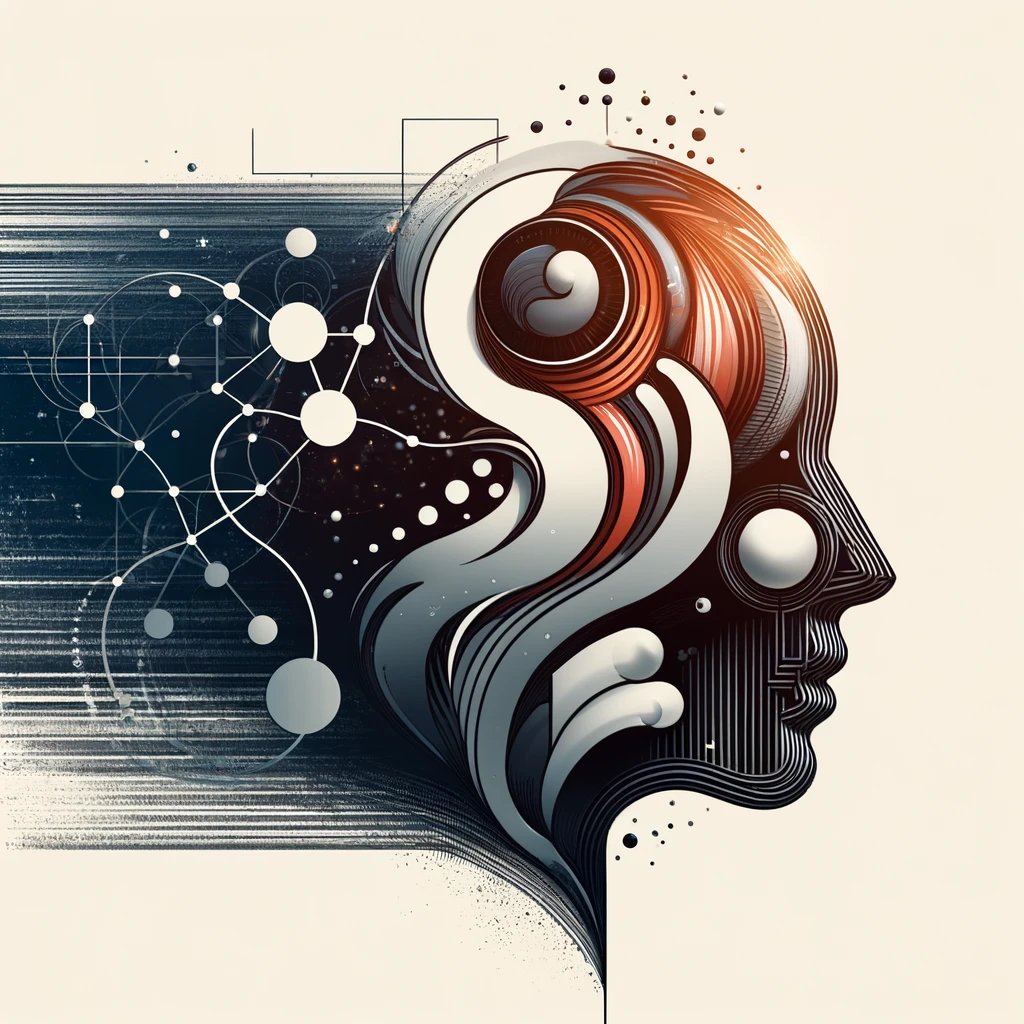
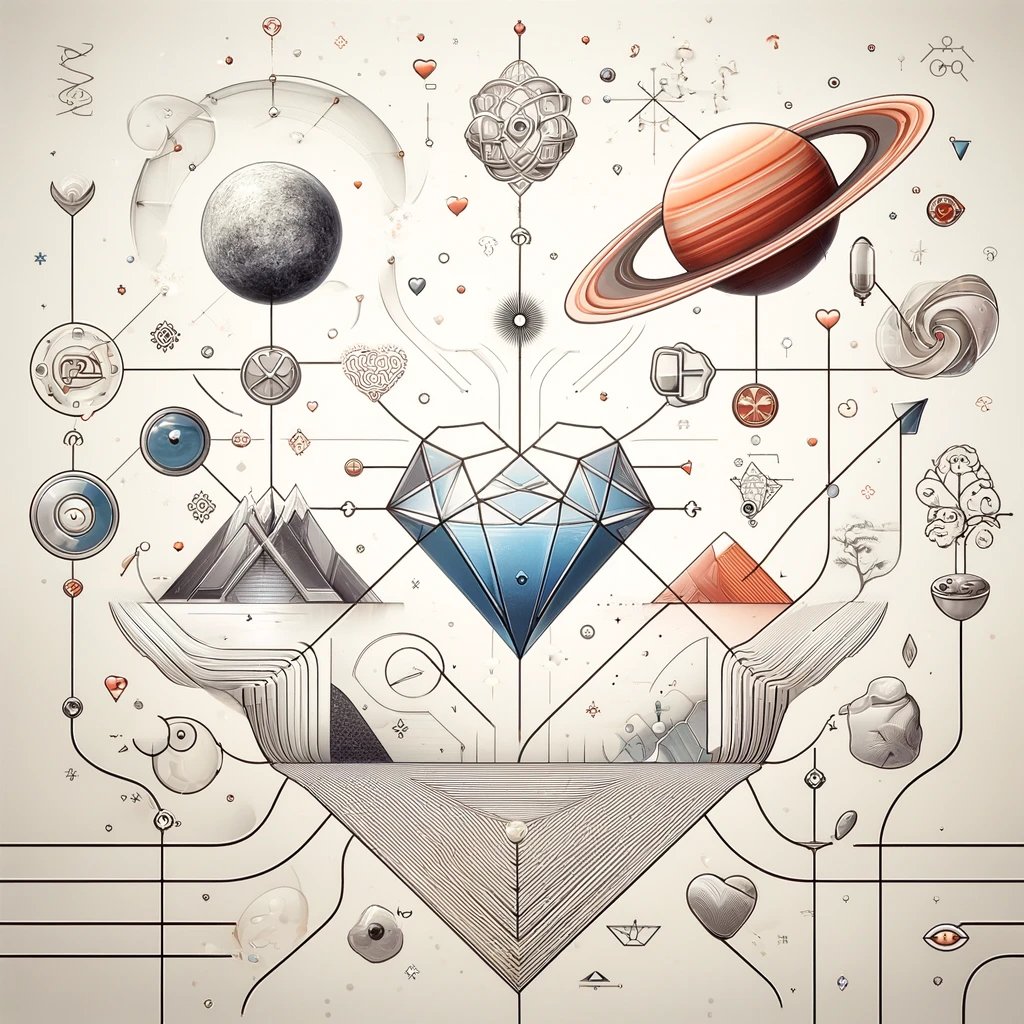


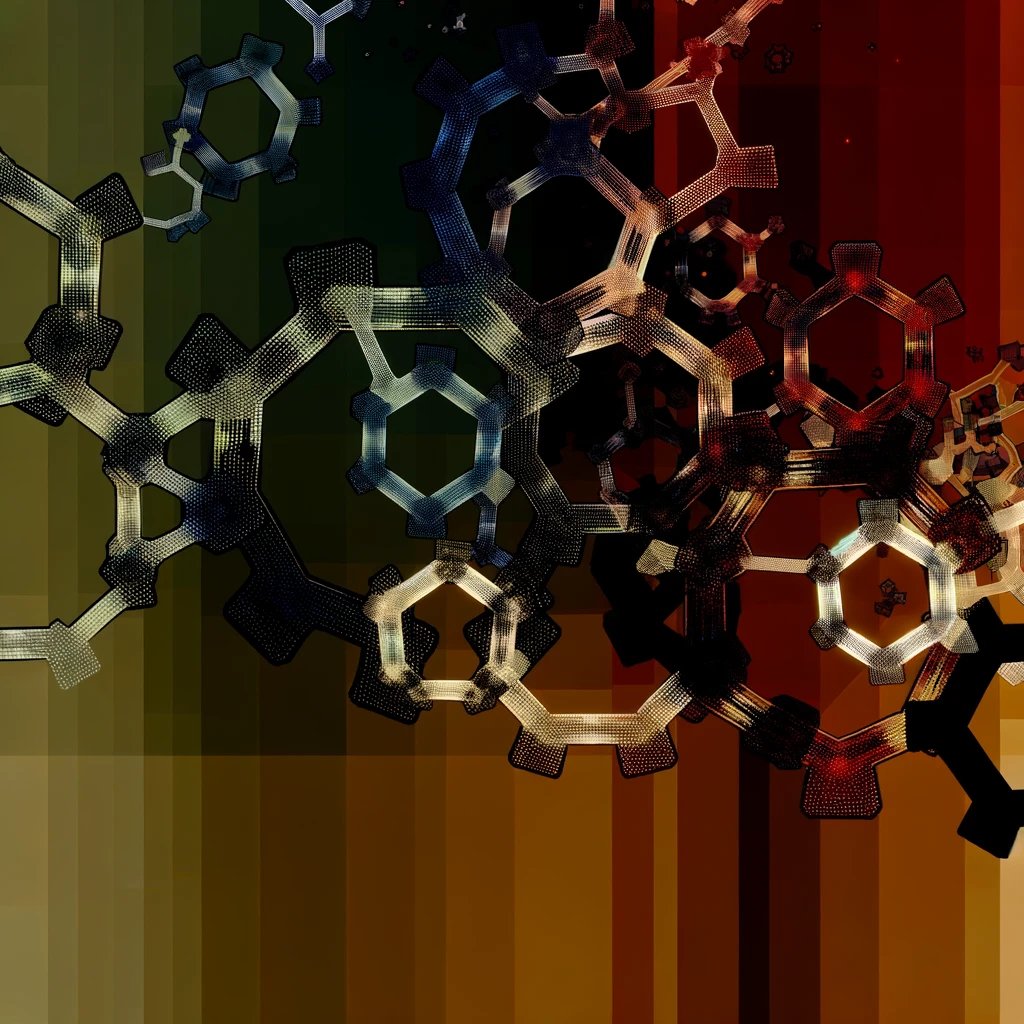



































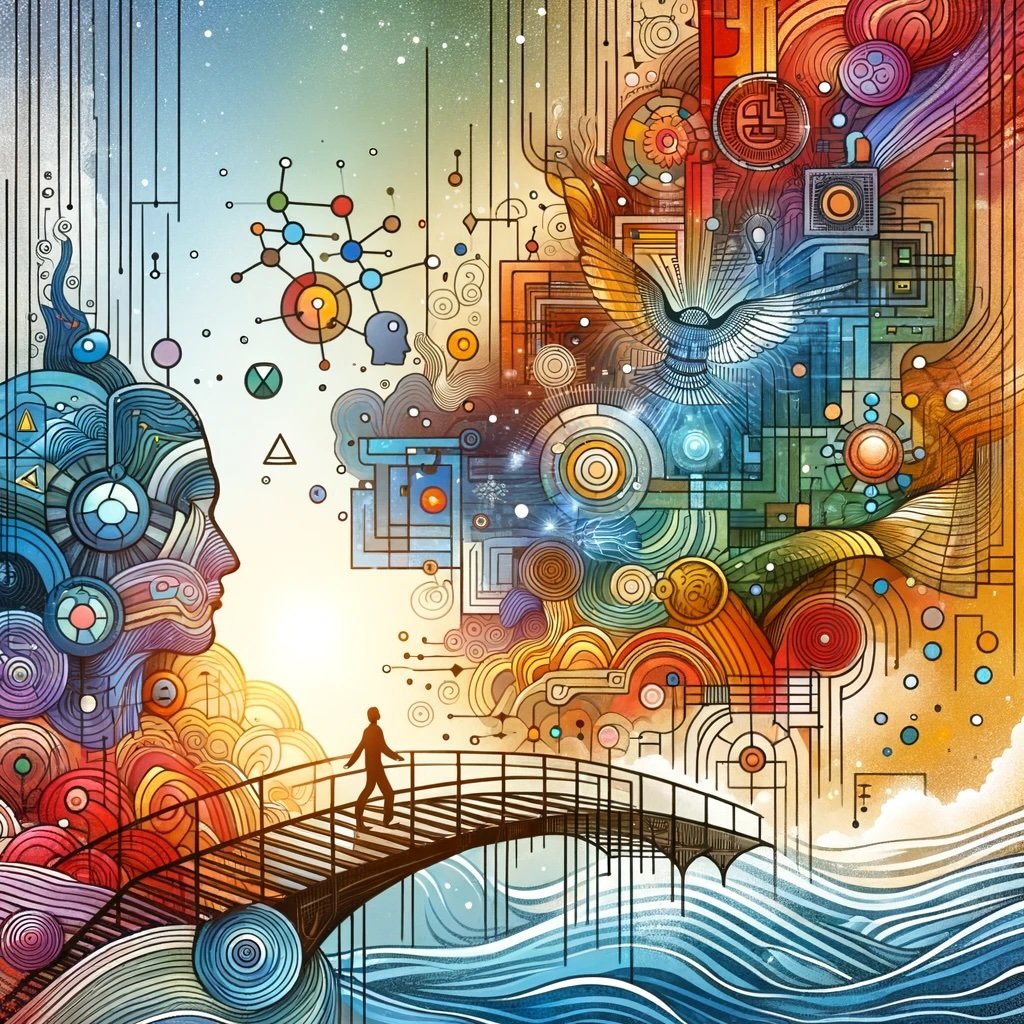















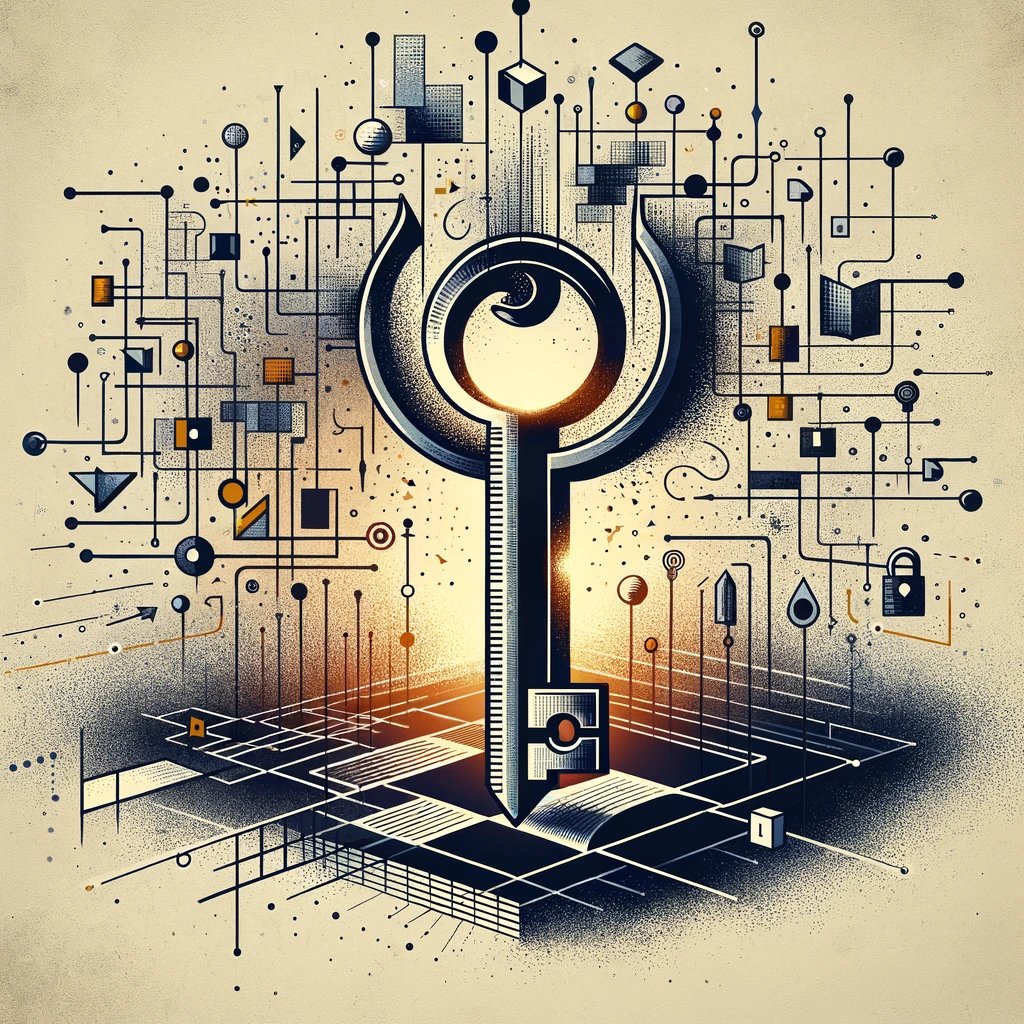










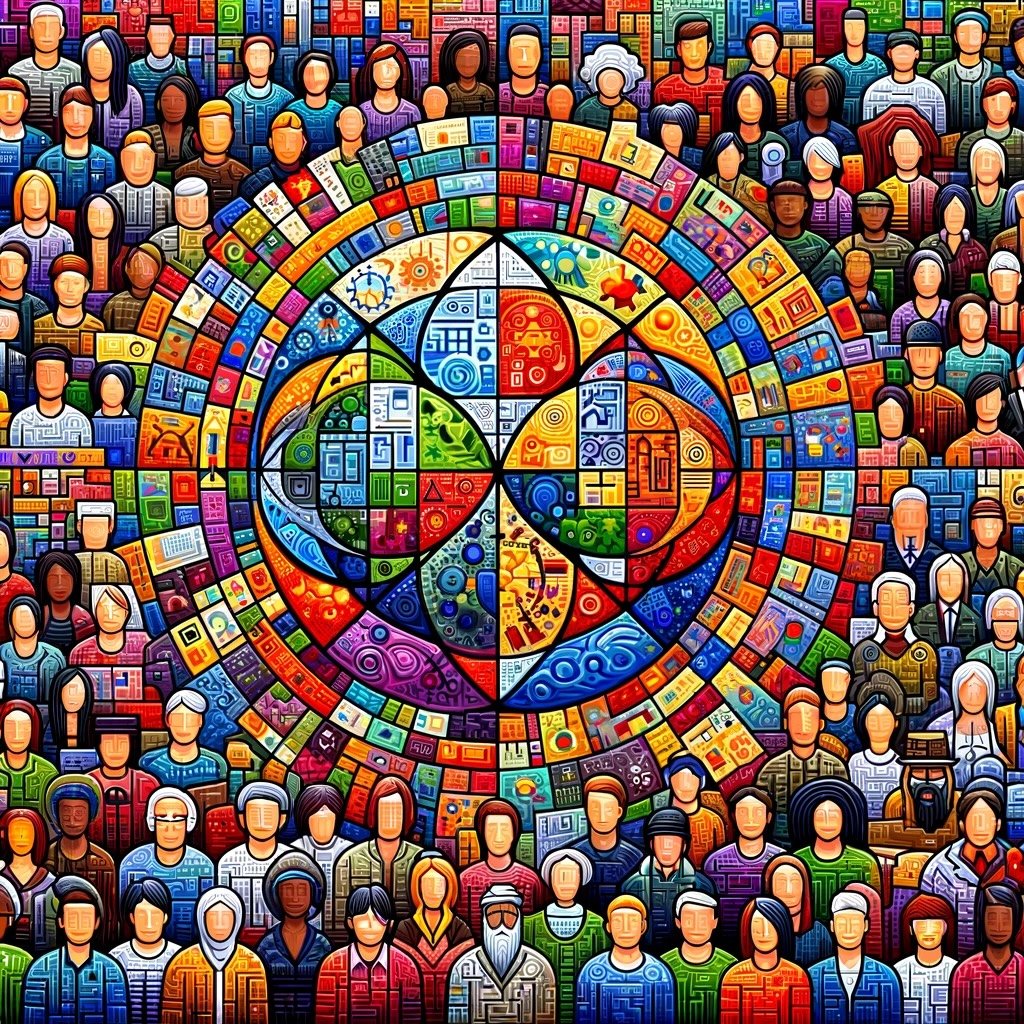








Examining the ways populism exploits incoherence and bad logic to make truth irrelevant, and the dangers this poses to political discourse.